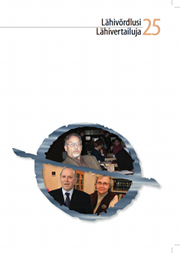Samatähenduslike sünteetiliste ja analüütiliste verbide kasutamine
Use of synonymus synthetic and analytic verbs
Author(s): Pille Eslon, Heleriin PaeojaSubject(s): Language studies, Language and Literature Studies, Semiotics / Semiology, Theoretical Linguistics, Morphology, Syntax, Lexis, Finno-Ugrian studies
Published by: Eesti Rakenduslingvistika Ühing (ERÜ)
Keywords: synthetic and analytical verbs; usage grammar; morphological structure; morphosyntatical patterns; lexico-semantical and gramatical variability; cluster analysis; n-grams; Estonian
Summary/Abstract: The first author of this paper developed an interest in synonymous syntheticand analytic verbs while editing Russian-Estonian-Russian translation dictionaries,upon discovering regularities in the relationships between aspect in Russian verbs and the choice between synthetic and analytic Estonian verbs as translation equivalents.While this phenomenon is rare and difficult to notice, it nevertheless raises questions: when do native speakers prefer to use synthetic and analytic verbs,respectively? In addition to synonymy and simplicity of form (synthetic verbs have only one component, while analytic verbs have at least two), are there other features that affect the choice of synthetic or analytic verbs? The present study aims to answer these questions.Five pairs of synonymous synthetic and analytic verbs are analyzed: igatsema– igatsust tundma ‘to long for, miss’, lahkuma – ära minema ‘to leave’,nõustuma – nõus olema ‘to agree’, muretsema – muret tundma ‘to be worried’,töötama – tööd tegema ‘to work’. We look for linguistic structures characteristic of both members of the given pairs, analyze the limits of their lexico-semanticand morphosyntactic variation, and compare the verbs’ meanings. On the basis of these features, it is possible to determine whether the pairs consist of two distinct verbs or two forms of the same verb. The theoretical-empirical aspect of the study is connected to the hypothesis of contraction of synonymous synthetic and analytic verbs, according to which semantically related synthetic-analytic verb pairs emerge, wherein the synthetic verb is used to denote abstract (inde"-nite) actions and the analytic verb is used for concrete (de"nite) actions. This process is accompanied by structural, morphological, morphosyntactic and lexico-semantic limitations on the usage of the verbs in question. The contractionof synonymous synthetic and analytic verbs is a process that takes place on the lexico-grammatical periphery. These verbs contribute to general linguistic variation,but in addition, a number of lexico-semantic, grammatical and structural restrictions develop on the usage of these verbs. Opposite tendencies – petrification and variation – work toward the same goal.
Journal: Lähivőrdlusi. Lähivertailuja
- Issue Year: 2015
- Issue No: 25
- Page Range: 63-104
- Page Count: 42
- Language: Estonian

